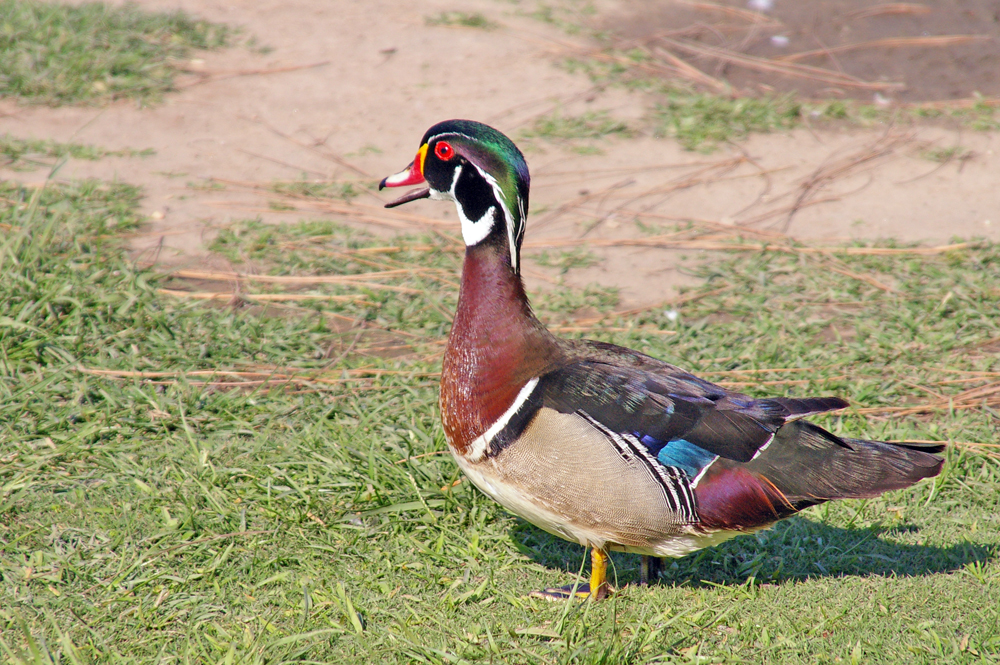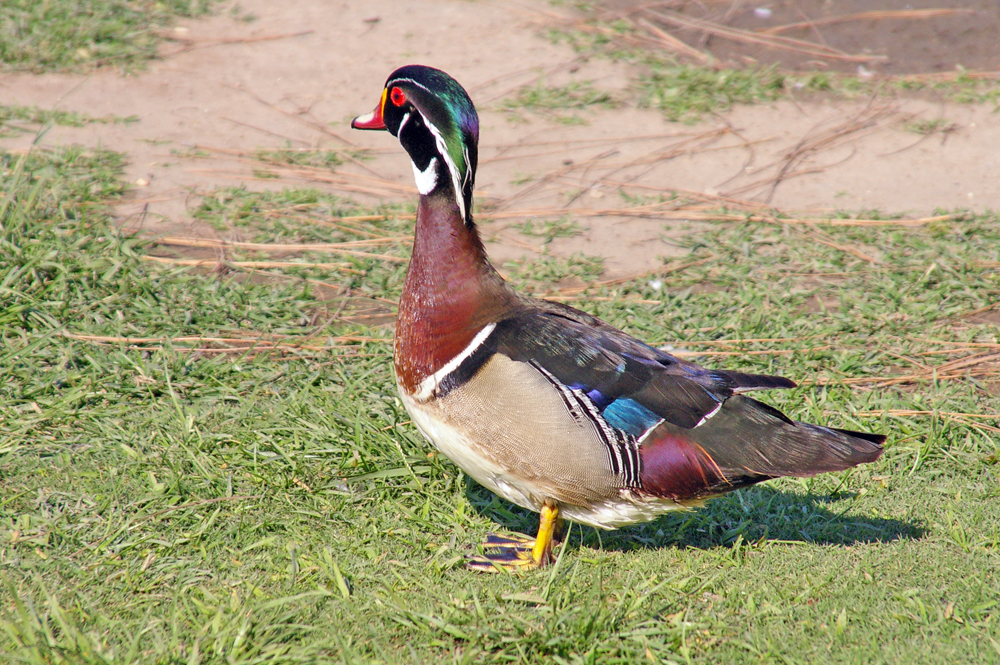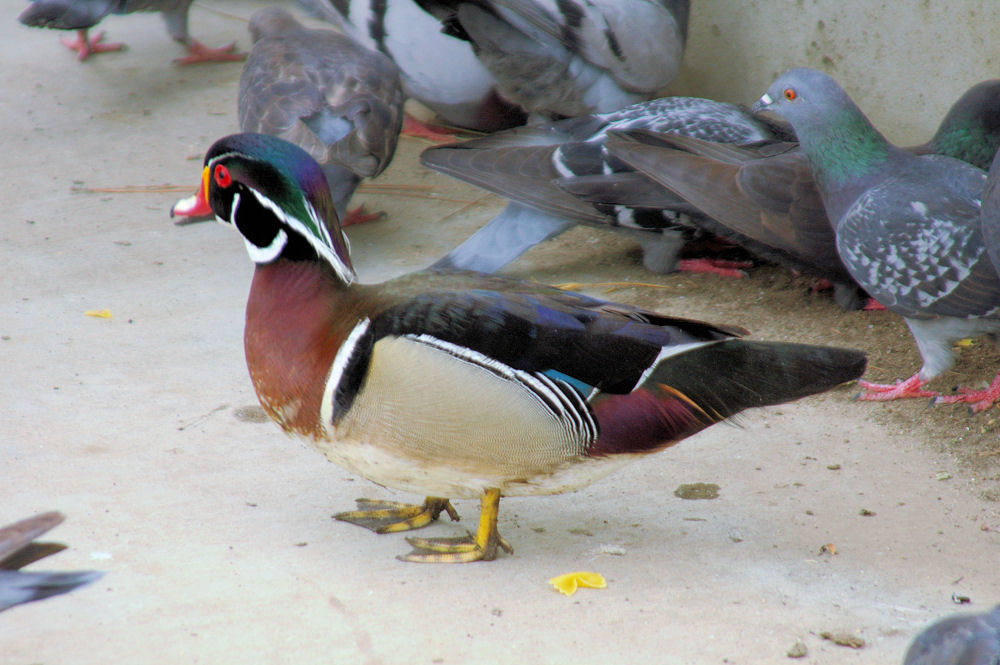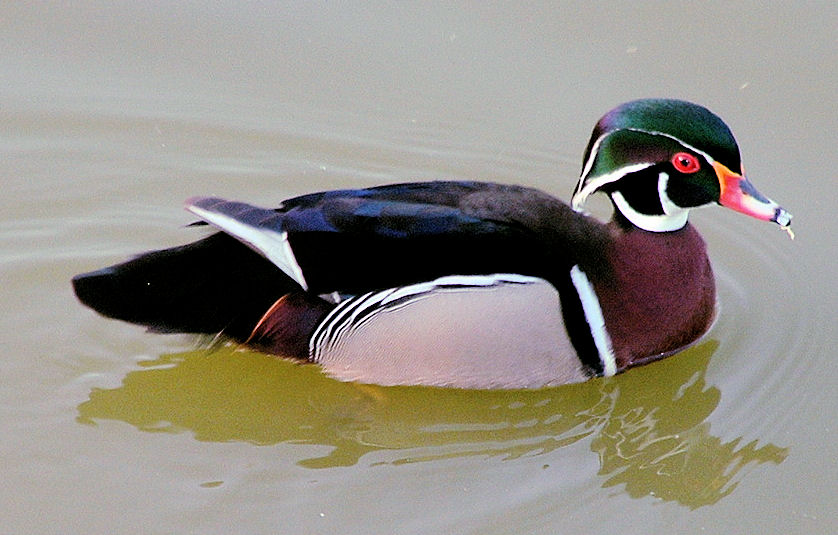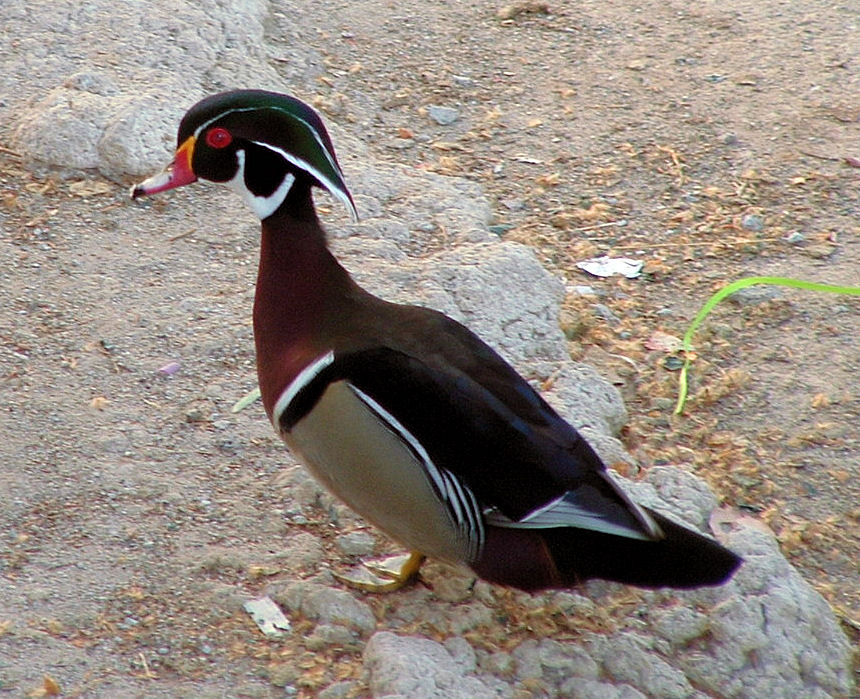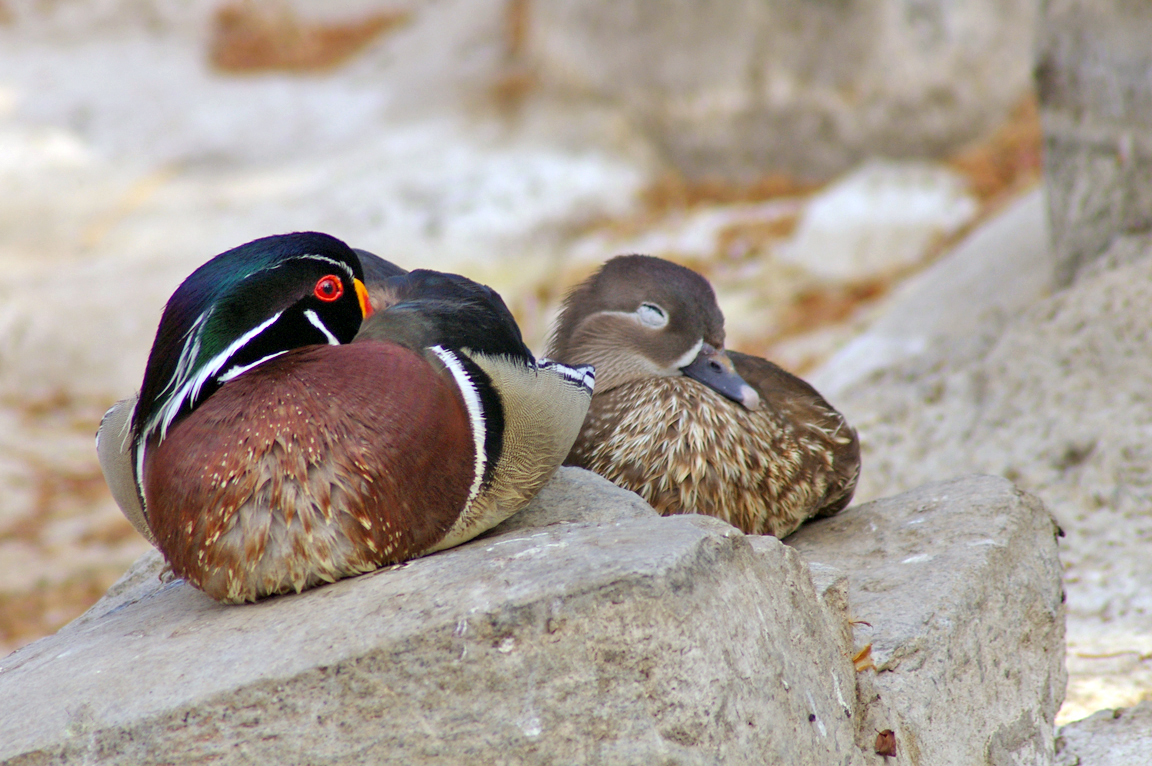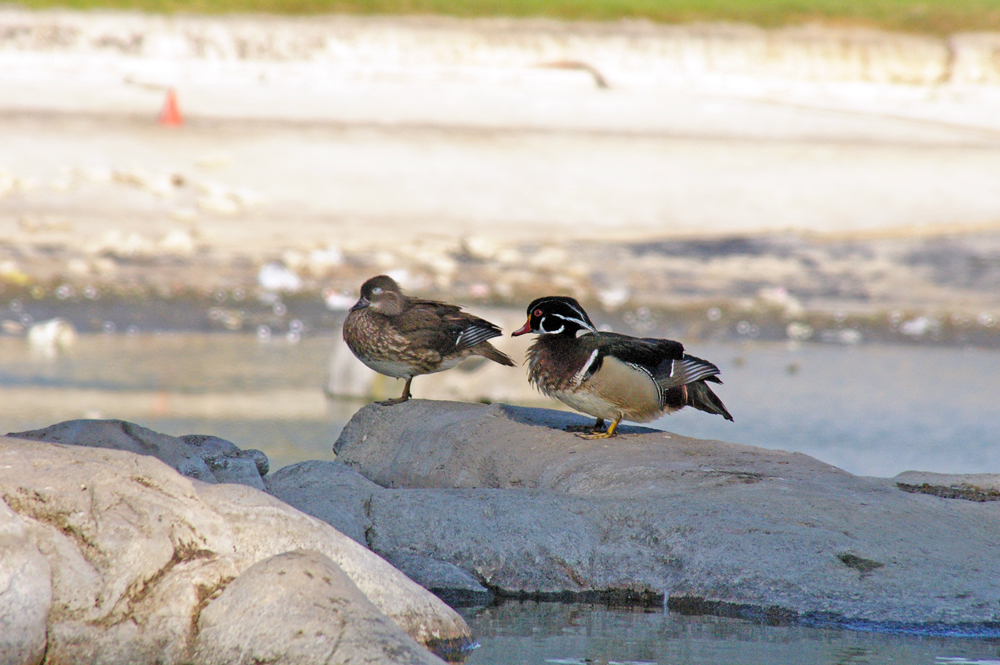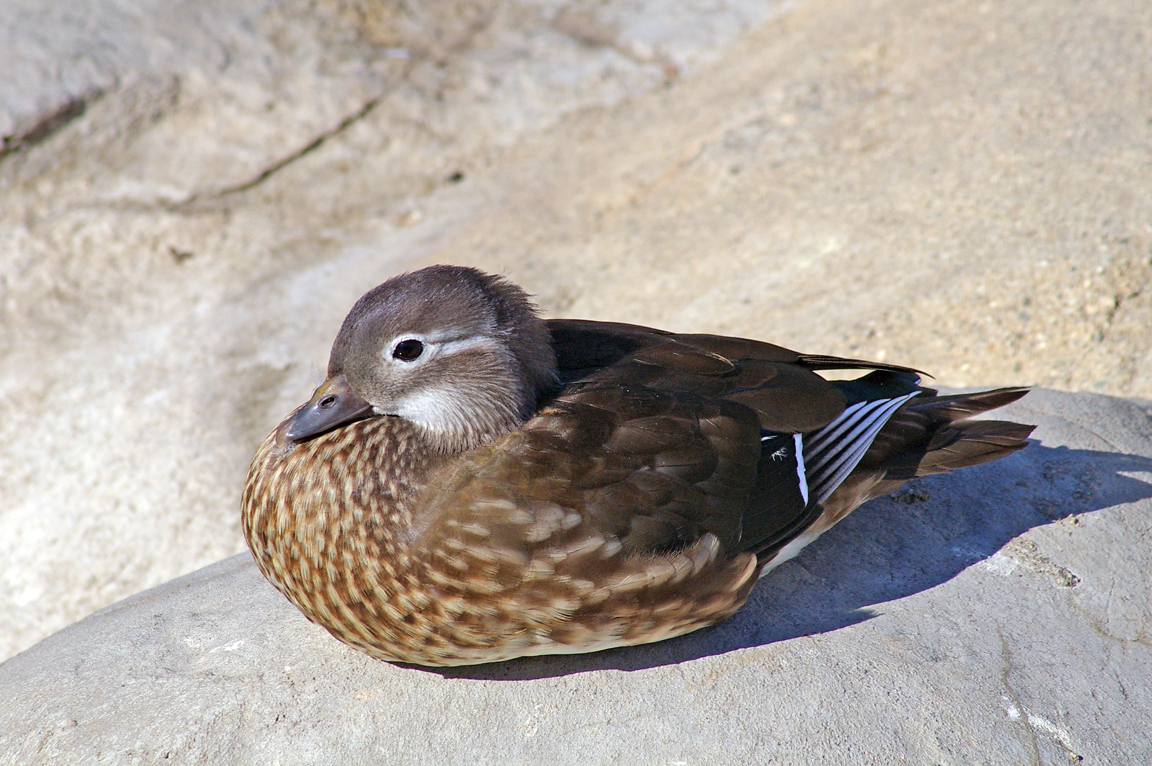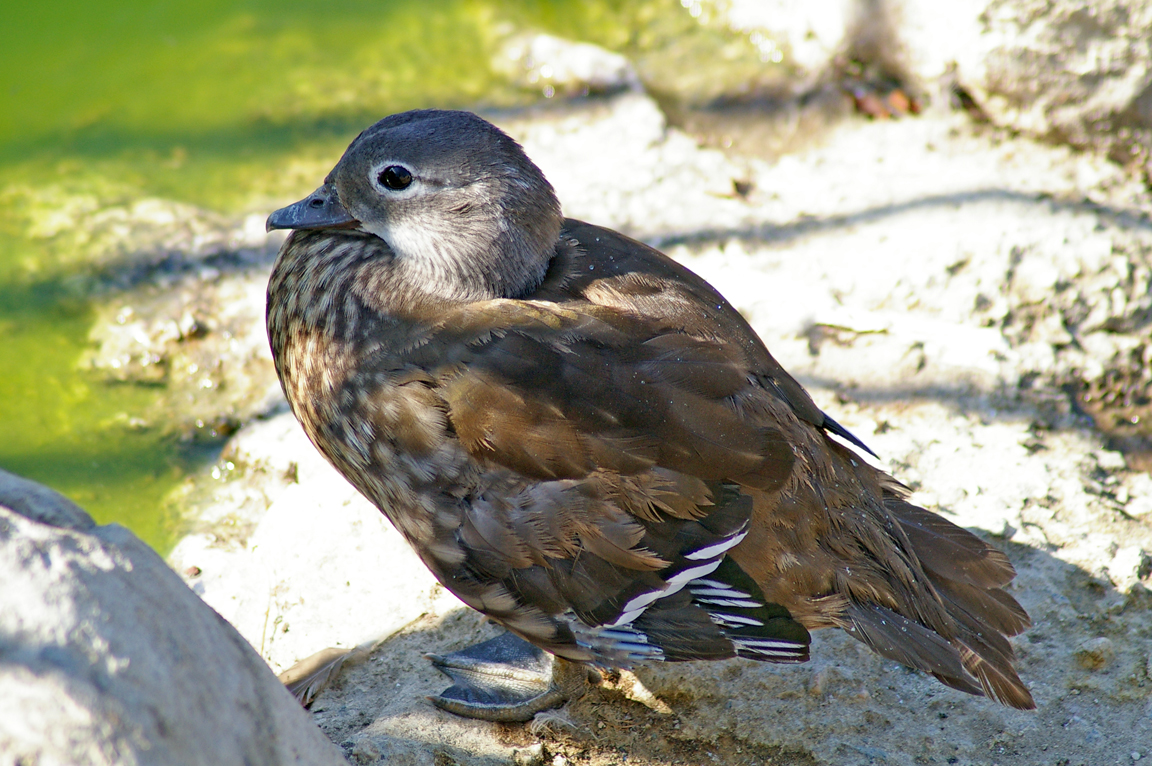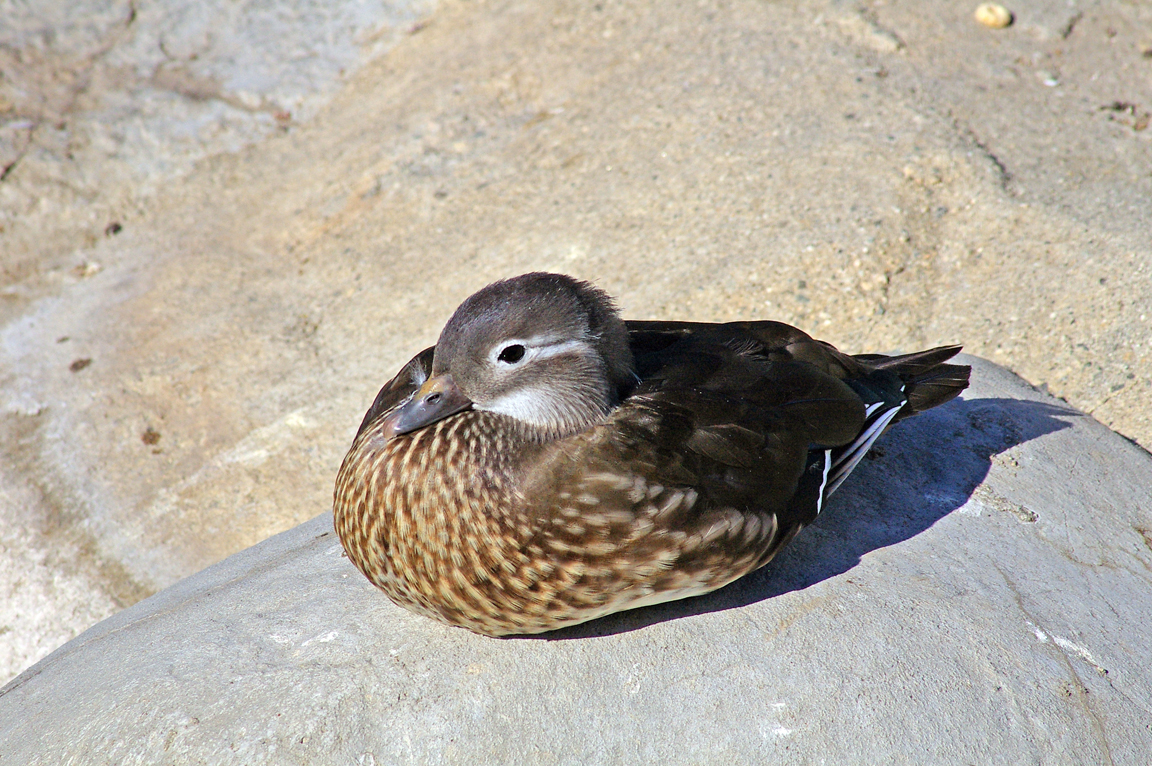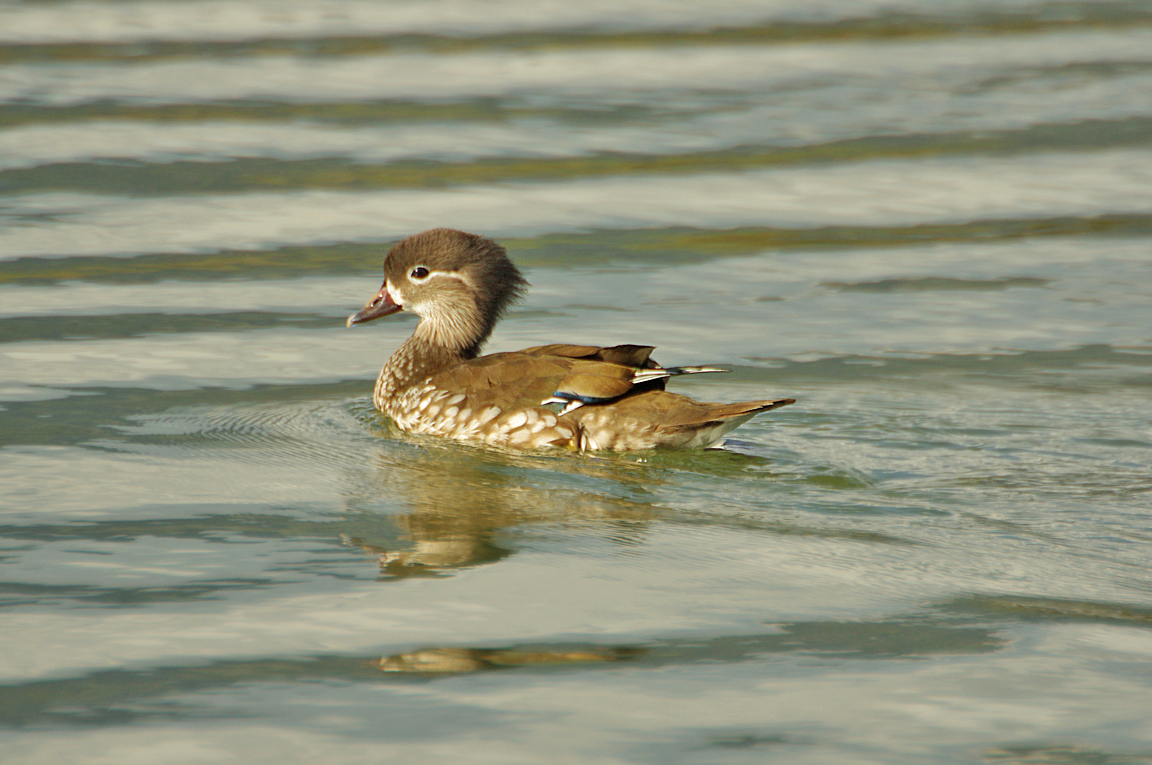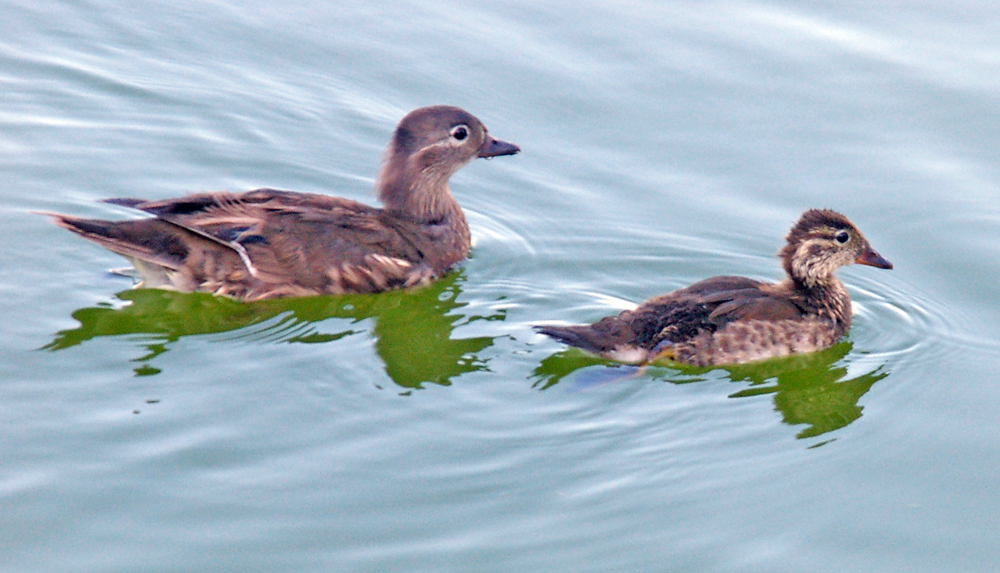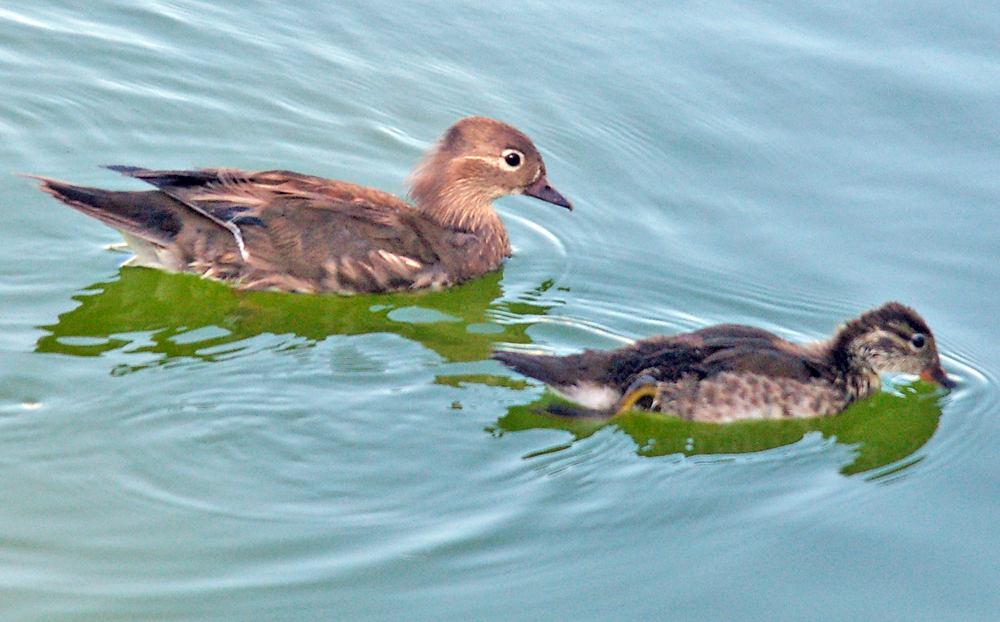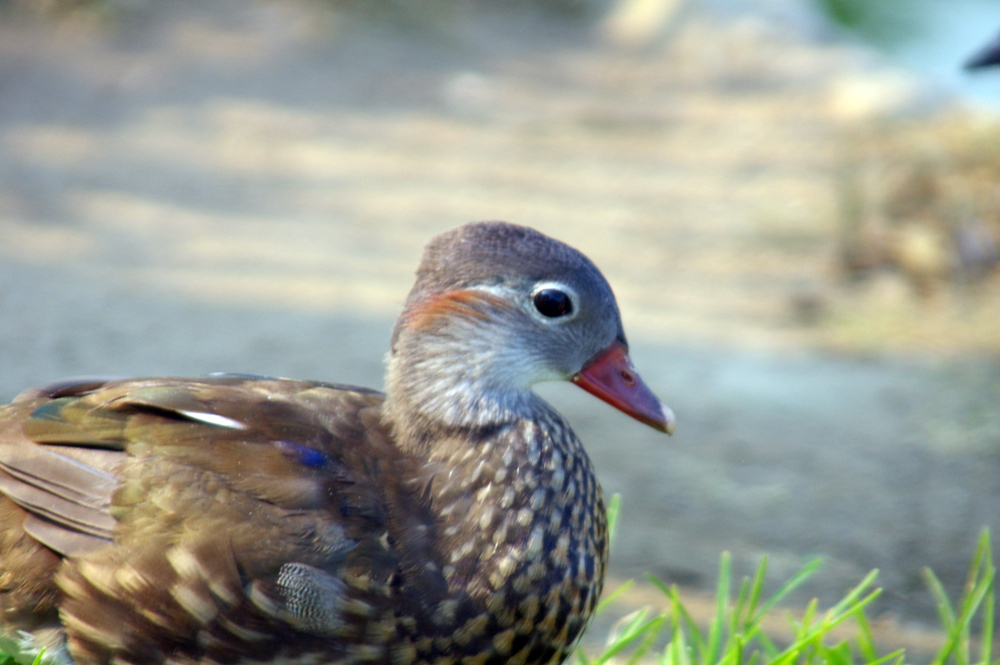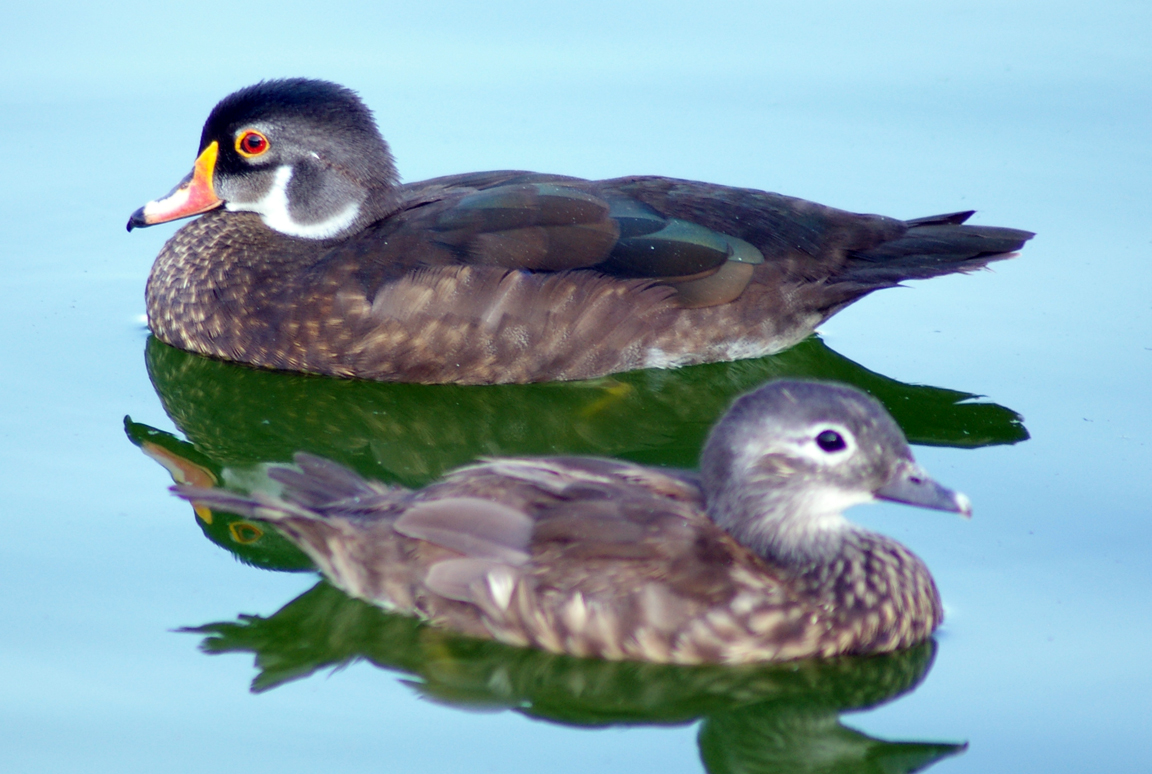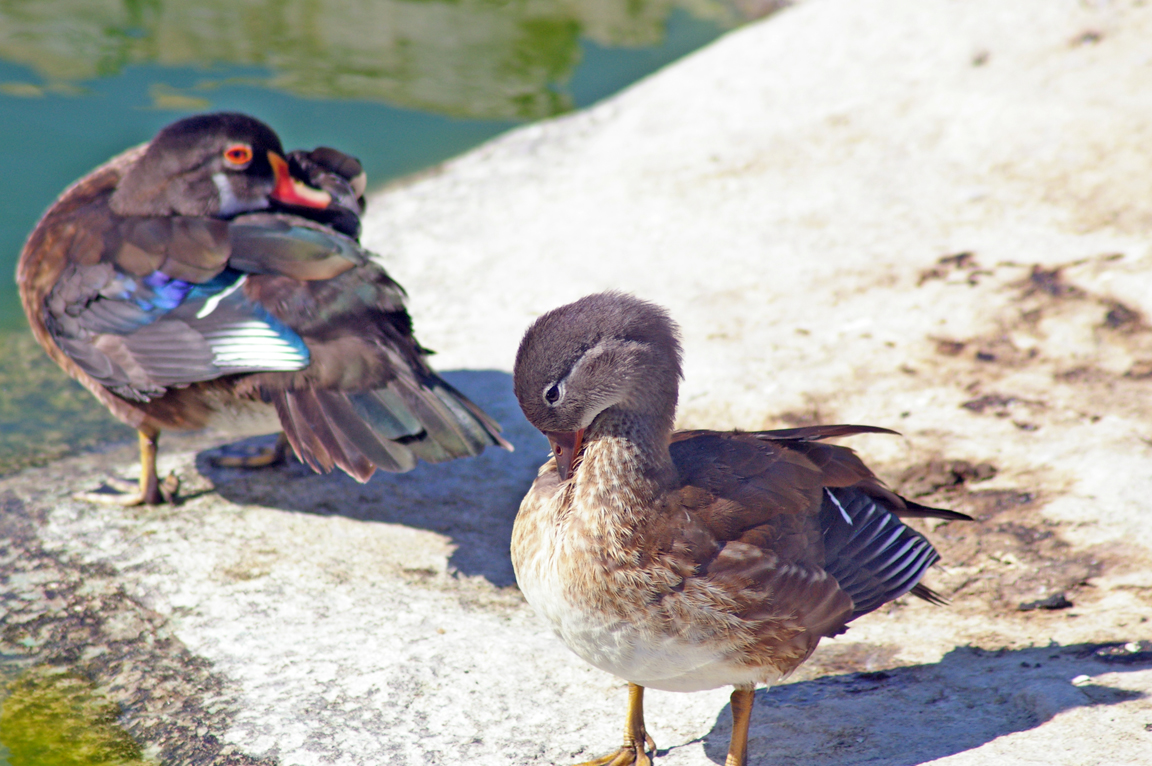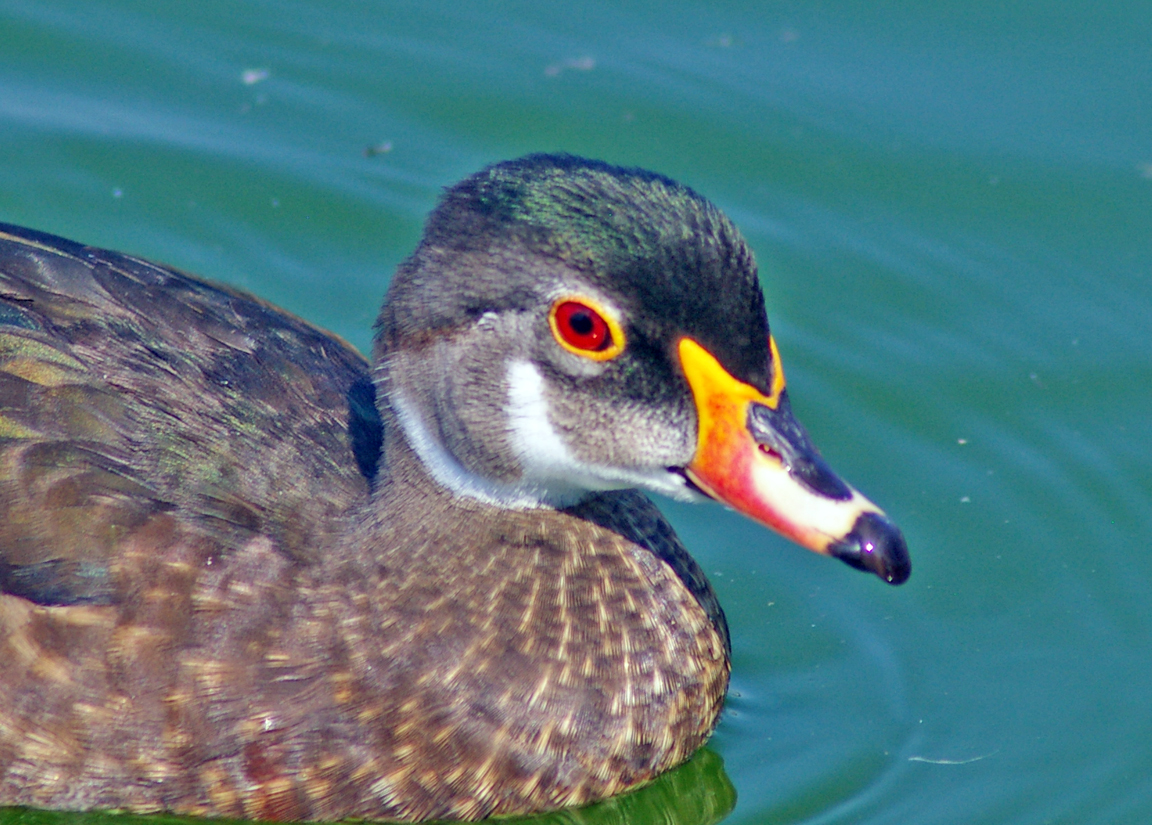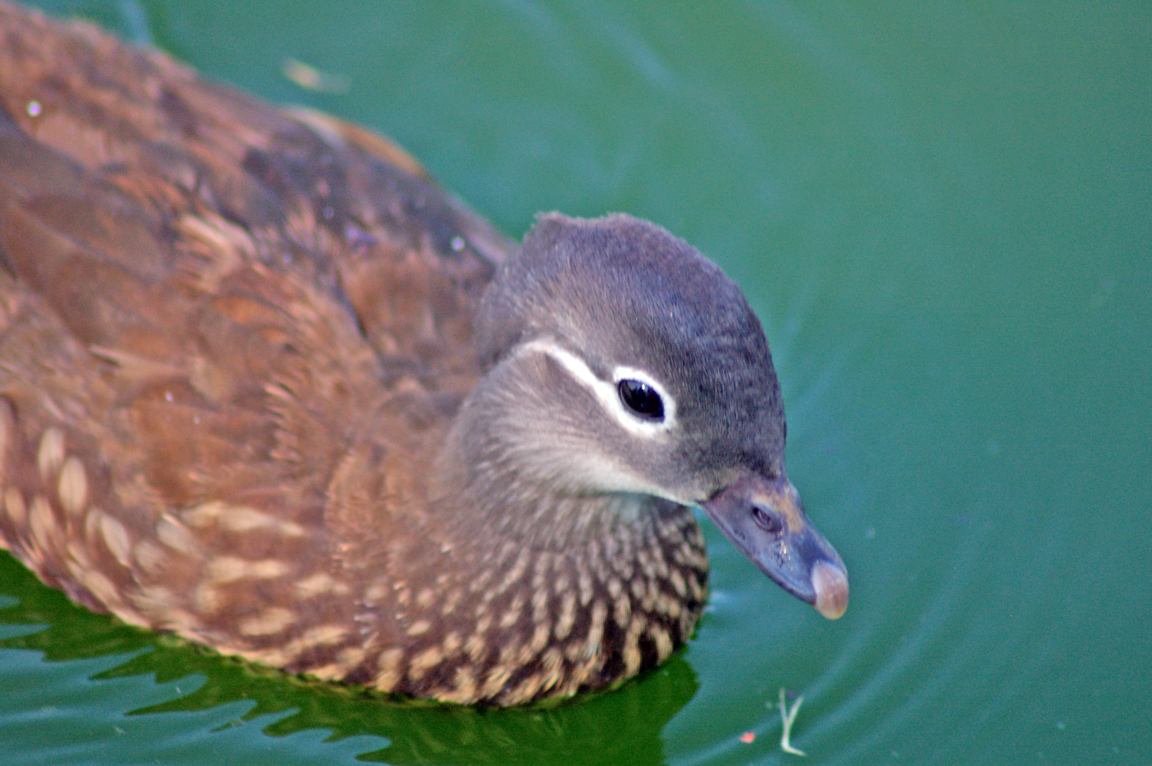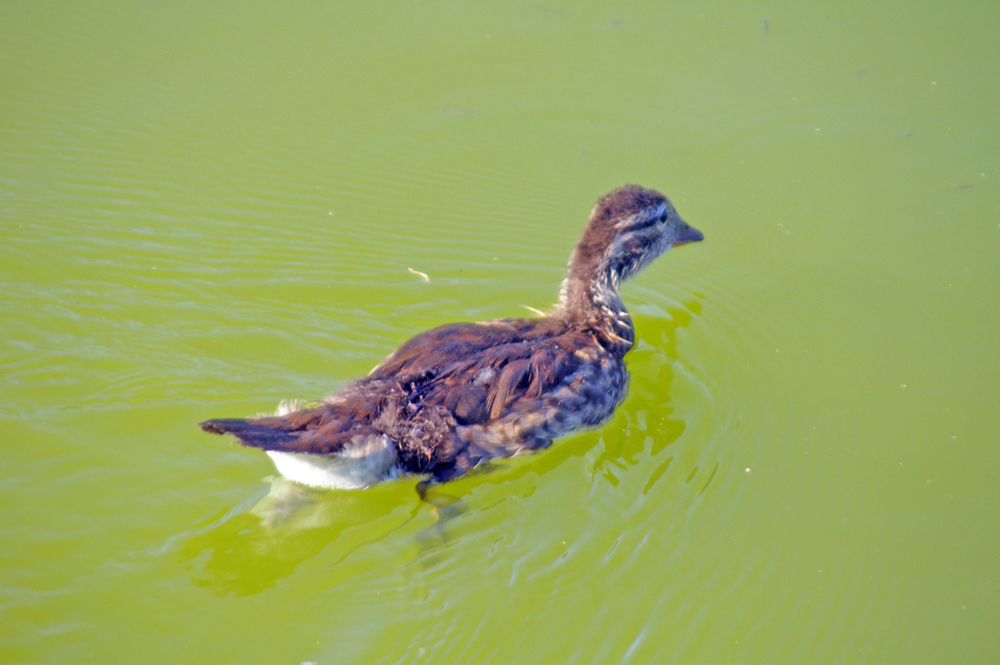|
|
|
 |
Wood Duck
|
| Aix sponsa | |
A colorful duck of wooded swamps and streamsides, the Wood Duck is one of only a few North American ducks that nest in trees. Many people consider it to be the most beautiful of all waterfowl.
Interesting Information
-
Natural cavities for nesting are scarce, and the Wood Duck readily uses nest boxes provided for it. If nest boxes are placed too close together, many females lay eggs in the nests of other females. These "dump" nests can have up to 40 eggs.
-
The Wood Duck nests in trees near water, sometimes directly over water, but other times up to 2 km (1.2 mi) away. After hatching, the ducklings jump down from the nest tree and make their way to water. The mother calls them to her, but does not help them in any way. The ducklings may jump from heights of up to 89 m (290 ft) without injury.
-
The Wood Duck is a popular game bird, and is second only to the Mallard in numbers shot each year in the United States.
-
Wood Ducks pair up in January, and most birds arriving at the breeding grounds in the spring are already paired. The Wood Duck is the only North American duck that regularly produces two broods in one year.
Description
-
Size: 47-54 cm (19-21 in)
-
Wingspan: 66-73 cm (26-29 in)
-
Weight: 454-862 g (16.03-30.43 ounces)
-
Medium-sized duck.
-
Crest on head.
-
Long tail.
-
White patches in face.
-
Long, broad wings.
-
Small triangular bill.
-
Iridescent blue-green patch (speculum) on rear of wing, with white trailing edge.
-
Male colorful and distinctive.
Sex Differences
Male
Breeding Alternate) Plumage:
Head iridescent green and purple. Long crest green, purple. Thin white line extending from bill, over the eye, to the back of the crest. Throat white with two finger-like projections onto face and neck. Bill red, with thin yellow at base and dark tip. Eyes red. Chest deep reddish. White stripe extending up side of chest; black bar behind it. Sides yellowish gold, bordered in black and surrounded by white line. Back black with metallic sheen. Undertail reddish violet. Tail black with bronzy sheen. Belly white.
Nonbreeding (Basic) Plumage:
Head and body gray. Head without long crest, but bushy. Throat white with extension up face and neck. Crown dark. Thin white line extending behind eye. Wings iridescent bluish. Bill dull red.
Female
Bushy crest on head. Head and cheek gray with bronze and purple sheen. White area around eye, tapers to rear. Chin and throat white. Upperparts olive or gray with metallic sheen. Breast gray-brown with tan streaks. Belly and under tail white. Sides brown. Tail dark. Bill dark with thin white line at base.
Immature
Similar to adult female. Upperparts brownish gray. Cheek light gray. White circle around eye. Throat white, with projections onto face and neck in males. Crown dark. Dark stripe extending back from eye.
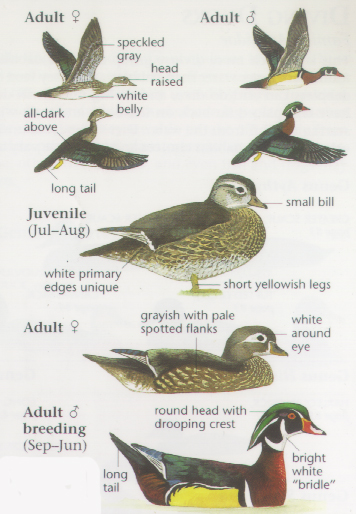
Photo taken from: The Sibley Field Guide by David Allen Sibley
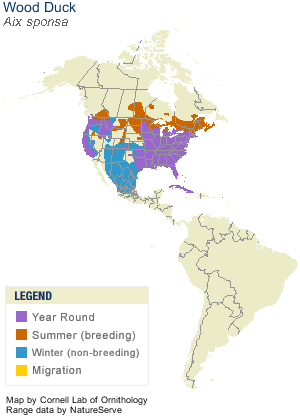
© 2003 Cornell Lab of Ornithology
|
Habitat |
|
Found in forested wetlands, including along rivers, swamps, marshes, ponds, and lakes. |
|
Behavior |
|
Moves rapidly and pecks and dabbles on water surface. May tip-up or dive for submerged food items. |
|
Food |
|
Seeds, acorns, fruits, aquatic and terrestrial invertebrates. |
Taxonomy
| Kingdom: | Animalia |
| Phylum: | Chordata |
| Subphylum: | Vertebrata |
| Class: | Aves |
| Order: | Anseriformes |
| Family: | Anatidae |
| Subfamily: | Anserinae |
| Genus: | Aix |
| Species: | Aix sponsa |
Similar Species |
|
Breeding male unmistakable. Female Hooded Merganser similarly shaped and in same habitats, but lacks white around eye, lacks any streaking on body, and has white, not green, in the speculum. |
|
Bird Sound |
|
Female makes loud "oo-eek, oo-eek" when disturbed and taking flight. Male has thin, rising and falling zeeting whistle. |
|
Eggs look like this |
|
Photo taken from: ARCTOS Collaborative Collection Management Solution |
Videos
Mandarin & Wood Duck 1
Wallflowers at the Dance
Mandarin & Wood Duck 2
The Chaperoned Date
Mandarin & Wood Duck 3
The First Kiss
Mandarin & Wood Duck 4
The Necking
Mandarin & Wood Duck 5
A Match Made in Heaven
Wood Duck
Wood Duck - Female
Wood Duck
Wood Duck - Male
